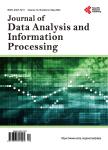A Hybrid Spatial Dependence Model Based on Radial Basis Function Neural Networks (RBFNN) and Random Forest (RF)
A Hybrid Spatial Dependence Model Based on Radial Basis Function Neural Networks (RBFNN) and Random Forest (RF)作者机构:Department of Mathematics Pan African University Institute for Basic Sciences Technology and Innovation (PAUSTI) Nairobi Kenya Department of Computing School and Information Technology (SCIT) Jomo Kenyatta University of Agriculture and Technology (JKUAT) Nairobi Kenya Department of Statistics and Actuarial Science Jomo Kenyatta University of Agriculture and Technology Nairobi Kenya
出 版 物:《Journal of Data Analysis and Information Processing》 (数据分析和信息处理(英文))
年 卷 期:2023年第11卷第3期
页 面:293-309页
学科分类:0711[理学-系统科学] 07[理学] 08[工学] 081101[工学-控制理论与控制工程] 0811[工学-控制科学与工程] 071102[理学-系统分析与集成] 081103[工学-系统工程]
主 题:Spatial Data Spatial Dependence Hybrid Model Machine Learning Algorithms
摘 要:The majority of spatial data reveal some degree of spatial dependence. The term “spatial dependence refers to the tendency for phenomena to be more similar when they occur close together than when they occur far apart in space. This property is ignored in machine learning (ML) for spatial domains of application. Most classical machine learning algorithms are generally inappropriate unless modified in some way to account for it. In this study, we proposed an approach that aimed to improve a ML model to detect the dependence without incorporating any spatial features in the learning process. To detect this dependence while also improving performance, a hybrid model was used based on two representative algorithms. In addition, cross-validation method was used to make the model stable. Furthermore, global moran’s I and local moran were used to capture the spatial dependence in the residuals. The results show that the HM has significant with a R2 of 99.91% performance compared to RBFNN and RF that have 74.22% and 82.26% as R2 respectively. With lower errors, the HM was able to achieve an average test error of 0.033% and a positive global moran’s of 0.12. We concluded that as the R2 value increases, the models become weaker in terms of capturing the dependence.



